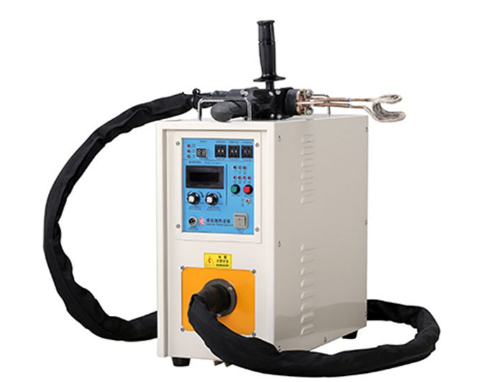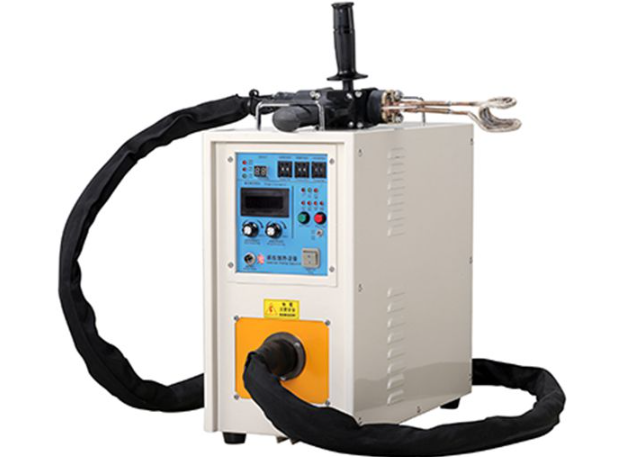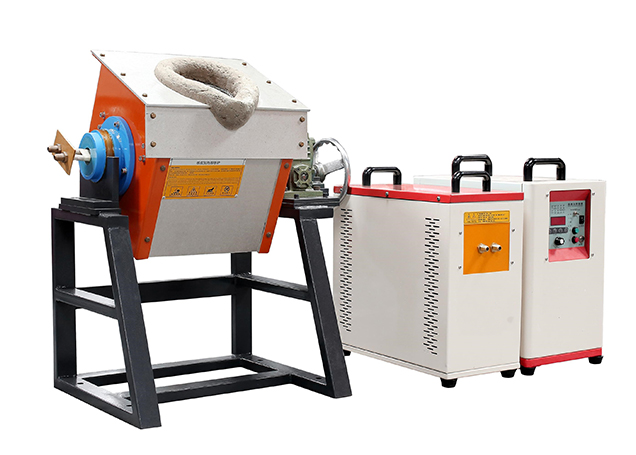Induction Welding Explained
Induction welding shares similarities with resistance welding, but it operates through a distinct process. Unlike resistance welding where current flows through contacts to the workpiece, induction welding machine utilizes an induction coil powered by a radio-frequency electric current and electromagnetic induction to heat the workpiece.
In this welding form, an electromagnetic field (EMF) acts upon both electrically conductive and ferromagnetic workpieces. Eddy currents are generated, leading to resistive heating. For ferromagnetic materials, hysteresis heating occurs as the EMF distorts their magnetic domains.
Moreover, the process introduces susceptors—metallic or ferromagnetic compounds—to nonmagnetic materials and electrical insulators. Susceptors absorb electromagnetic energy from the induction coil, generating heat that gets dispersed to the surrounding material via thermal conduction.
Induction welding is commonly employed in highly automated, long production runs, notably for welding pipe seams. Tubes, for instance, can undergo induction welding along their open seams. Heating the edges to a high temperature enables welding, after which the seam edges are fused together. The process is rapid due to the concentrated power that causes the faying surfaces to melt quickly, allowing for a continuous rolling weld when pressed together.
The depth of heating penetration is influenced by temperature and metal composition. Notably, the penetration depth is inversely proportional to the square root of the frequency.
In summary, induction welding is an efficient and precise method commonly used in automated, high-volume production settings, particularly for welding pipe seams. Its ability to quickly generate heat and create strong, continuous welds makes it a preferred choice for various industrial applications, impacting factors like penetration depth based on temperature and metal composition.

induction heating brazing machine
Induction Heating: Understanding the Process
Induction heating machine employs electromagnetic induction to heat electrically conductive materials, predominantly metals. Within the metal, the process generates eddy currents, leading to resistance and subsequently Joule heating, commonly known as resistive heating. An induction heater comprises an electromagnet through which a high-frequency alternating current (AC) passes, inducing heat. Additionally, magnetic hysteresis can contribute to the heating process, with the AC frequency contingent on factors such as object size, material type, penetration depth, and the coupling between the work coil and the workpiece.
This heating method finds applications in diverse processes like surface hardening, melting, brazing, and soldering. It has been instrumental in heating molten metals, gaseous conductors, graphite crucibles, and in the semiconductor industry. Its cost-effectiveness is evident as it often eliminates the need for inverters. Particularly favored for iron and iron alloys due to their ferromagnetic properties, this technique can generate eddy currents in any conductor and hysteresis in any magnetic material.
The mechanics of induction heating involve furnaces that raise the temperature of various metals—iron, steel, copper, aluminum, or precious metals—until they reach their melting points. Typically, these furnaces consist of water-cooled copper rings and can vary in size from small units to those with a capacity of several hundred tons. Foundries today often utilize induction furnaces as an alternative to reverberatory furnaces. These furnaces can operate in a vacuum or inert atmosphere, minimizing oxidation and ensuring a cleaner process. Additionally, the high-frequency magnetic field can stir metals, ensuring uniform alloy distribution for enhanced material properties.
In summary, induction heating stands as a versatile and efficient method applied across various industries. Its ability to rapidly and precisely heat electrically conductive materials, alongside its versatility in various applications and material types, has cemented its position as a preferred choice for numerous manufacturing and metallurgical processes.
Conclusion
The discussion on induction welding and induction heating elucidates two distinct yet highly efficient methods employed in industrial settings.
Both methods showcase efficiency and precision in heating and welding processes. Induction welding excels in creating strong welds in automated, high-volume production settings, while induction heating offers rapid and precise heating across diverse industrial applications. Their widespread usage in manufacturing and metallurgical processes highlights their importance in modern industrial practices.








